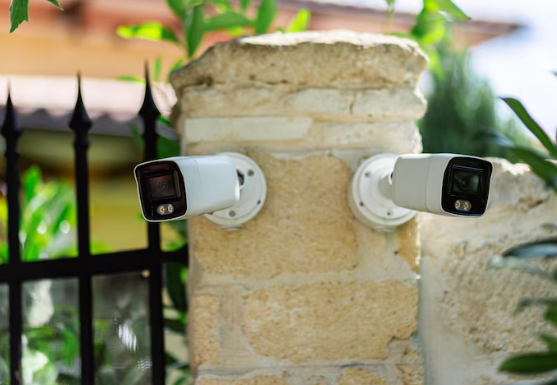Understanding The 3 Functionality Of Access Control Camera Systems

Access control camera systems have become indispensable tools in modern security setups. Beyond traditional locks and keys, these systems offer a dynamic and comprehensive approach to controlling entry and ensuring the safety of both property and personnel. Understanding how these systems function is crucial for businesses, institutions, and homeowners alike. In this article, we delve into the core functionality of access control camera systems, exploring their components, operations, and benefits.
Components of Access Control Camera Systems
At the heart of an access control camera system lies a network of interconnected components designed to monitor, manage, and regulate access to a designated area. These components typically include:
Cameras: Access control systems are equipped with a variety of cameras strategically positioned to provide comprehensive coverage of the premises. These cameras may include fixed, pan-tilt-zoom (PTZ), or dome cameras, each serving specific surveillance needs.
Access Control Panels: Access control panels serve as the central command hub of the system, managing user credentials, access permissions, and real-time monitoring. These panels are often equipped with intuitive interfaces for easy navigation and configuration.
Card Readers and Biometric Devices: To grant access, users typically present credentials such as access cards, key fobs, PIN codes, or biometric identifiers (e.g., fingerprints, facial recognition). Card readers and biometric devices authenticate these credentials, determining whether to permit or deny entry.
Locking Mechanisms: Integrated with doors, gates, or turnstiles, locking mechanisms control physical access to the premises. These mechanisms may include electric strikes, magnetic locks, or motorized bolts, which are activated based on access permissions granted by the system.
Software and Management Platforms: Access control camera systems rely on specialized software and management platforms to facilitate configuration, monitoring, and reporting. These platforms offer features such as remote access, event logging, and real-time alerts, empowering administrators to maintain security vigilance from any location.
Functionality and Operations
The functionality of access control camera systems revolves around three primary operations: authentication, authorization, and audit.
Authentication: When a user attempts to gain access to a secured area, the system initiates an authentication process to verify the validity of their credentials. This process may involve scanning an access card, entering a PIN code, or presenting biometric data.
Authorization: Upon successful authentication, the system checks the user’s credentials against predefined access control policies to determine whether access should be granted or denied. These policies specify which areas users are permitted to enter and under what conditions.
Audit: Access control camera systems maintain detailed audit trails of access events, capturing information such as user identities, entry timestamps, and access points. Administrators can review these audit logs to track user activity, investigate security incidents, and identify areas for improvement.
Benefits of Access Control Camera Systems
The adoption of access control camera systems offers a myriad of benefits for organizations and individuals concerned with security and access management:
Enhanced Security: By integrating surveillance capabilities with access control, these systems provide a robust deterrent against unauthorized entry, theft, and vandalism.
Scalability: Access control camera systems can be scaled to accommodate the evolving needs of a growing organization or property, ensuring seamless expansion without compromising security.
Remote Management: With remote access capabilities, administrators can monitor and manage access control systems from anywhere with an internet connection, enabling proactive security management and rapid incident response.
Compliance and Reporting: Access control camera systems facilitate compliance with regulatory requirements and industry standards by providing comprehensive audit trails and reporting tools for regulatory audits and internal assessments.
Peace of Mind: Access control camera systems offer homeowners and business owners alike peace of mind by safeguarding property, assets, and occupants against potential threats.
Conclusion
Access control camera systems represent a cornerstone of modern security infrastructure, offering a multifaceted approach to access management and surveillance. By understanding the functionality and benefits of these systems, organizations, and individuals can make informed decisions to enhance the security and safety of their environments. As technology continues to advance, access control camera systems will undoubtedly play an increasingly vital role in safeguarding the spaces we inhabit.
